Rhombus
A rhombus is a parallelogram with four congruent sides. The plural of rhombus is rhombi . (I love that word.)
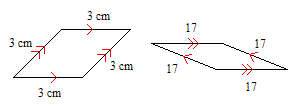
The formula for the area of a rhombus is the same as the formula for a parallelogram:
,
where is the length of a base and is the height.
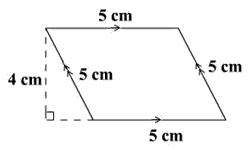
.
Diagonals of a Rhombus
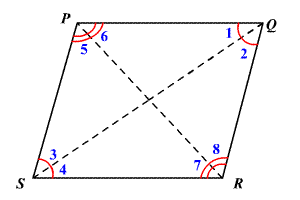
If a parallelogram is a rhombus, then its diagonals are perpendicular.
For Example: If is a rhombus, then .
If a parallelogram is a rhombus, then each diagonal bisects a pair of opposite angles.
For Example: If is a rhombus, then
.
Example 1:
In rhombus , . Find
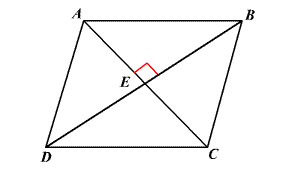
In a rhombus, consecutive interior angles are supplementary. So,
.
Substitute the measures and solve for .
Use the value of to find
Each pair of opposite angles of a rhombus is congruent. So,
.
Example 2:
In rhombus , . Find
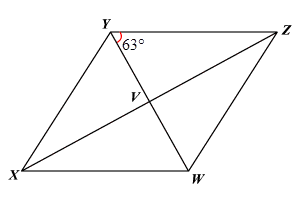
The diagonals of a rhombus are perpendicular.
Use the Angle Sum Theorem.
Substitute the measures and solve.



